Dateline: 3.23.12
The 1954 “Could-Have-Been” Motorama Dream Corvettes
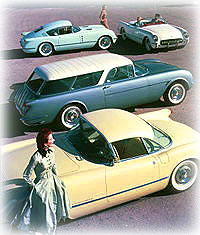 Back in ‘09 when General Motors was getting more negative publicity than they ever dreamed, I received a few emails from car pals with images of the 1954 Motorama Corvette variants – the Pontiac Bonneville, the Olds F-88, and the Buick Wildcat II. The gist of the emails was this, “Look at how GM screwed up! The 6-banger Corvette “could have been” a powerful V8, classic ‘50s beauty.” Bla, bla, bla.
Back in ‘09 when General Motors was getting more negative publicity than they ever dreamed, I received a few emails from car pals with images of the 1954 Motorama Corvette variants – the Pontiac Bonneville, the Olds F-88, and the Buick Wildcat II. The gist of the emails was this, “Look at how GM screwed up! The 6-banger Corvette “could have been” a powerful V8, classic ‘50s beauty.” Bla, bla, bla.
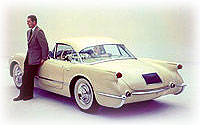 While it is true that the above mentioned cars were beauties, there’s no way they would have made it into production. The ‘53 and ‘54 Corvette already had Cadillac prices. The Pontiac, Buick, and Olds versions would have cost even more. But it was an interesting look back, as it turned out that the ‘54 Motorama had numerous delicious concept cars.
While it is true that the above mentioned cars were beauties, there’s no way they would have made it into production. The ‘53 and ‘54 Corvette already had Cadillac prices. The Pontiac, Buick, and Olds versions would have cost even more. But it was an interesting look back, as it turned out that the ‘54 Motorama had numerous delicious concept cars.
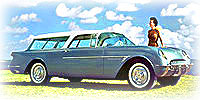 In my Illustrated Corvette Series No. 178, I covered the “Chevy/Corvette” concept cars, the Corvette Coupe, the Corvair Fastback, and the Nomad. (The Pontiac, Olds, and Buick concept cars were covered in a later column) Keeping in mind that “concept cars” are three dimensional canvases for designers to try out new ideas, it’s always fun to look back to see what ideas made it into production and where they were used.
In my Illustrated Corvette Series No. 178, I covered the “Chevy/Corvette” concept cars, the Corvette Coupe, the Corvair Fastback, and the Nomad. (The Pontiac, Olds, and Buick concept cars were covered in a later column) Keeping in mind that “concept cars” are three dimensional canvases for designers to try out new ideas, it’s always fun to look back to see what ideas made it into production and where they were used.
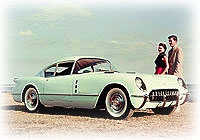 The hardtop on the Motorama Coupe looked more like a prototype for the bolt-on hardtop that made it into production in ‘56. The Corvair showed us that Corvette stylists were already thinking about fastback designs. And the Nomad, while a sweet machine made it into production in name only as the station wagon version of the ‘55 Belair. The fastback roof on the Corvair could have been interesting on the ‘56-’57 and ‘58-’62 Corvettes, but wasn’t to be. But hey, that’s part of the fun! Below is the story. Enjoy! – Scott
The hardtop on the Motorama Coupe looked more like a prototype for the bolt-on hardtop that made it into production in ‘56. The Corvair showed us that Corvette stylists were already thinking about fastback designs. And the Nomad, while a sweet machine made it into production in name only as the station wagon version of the ‘55 Belair. The fastback roof on the Corvair could have been interesting on the ‘56-’57 and ‘58-’62 Corvettes, but wasn’t to be. But hey, that’s part of the fun! Below is the story. Enjoy! – Scott
PS – Art prints of the 1954 Motorama Corvettes are available below!
Illustrated Corvette Series No. 178 – 1954 Motorama Corvettes
“The Could Have Been Corvettes”
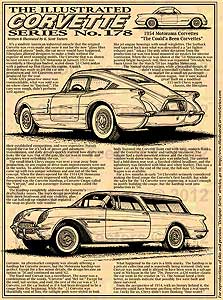 It’s a modern American industrial miracle that the original Corvette was even made and were it not for the new “glass fiber reinforced plastic” body, the car never would have happened. Fiberglass allowed designers to make a body without the expense of steel stamping molds. The Corvette that was shown to rave reviews at the GM Motorama in January 1953 was essentially a fiberglass bodied, scaled down ‘53 Chevy sedan with a goosed-up Blue Flame Six engine. A quick decision was made to get the car into production and 300 Corvettes were produced for the year.
It’s a modern American industrial miracle that the original Corvette was even made and were it not for the new “glass fiber reinforced plastic” body, the car never would have happened. Fiberglass allowed designers to make a body without the expense of steel stamping molds. The Corvette that was shown to rave reviews at the GM Motorama in January 1953 was essentially a fiberglass bodied, scaled down ‘53 Chevy sedan with a goosed-up Blue Flame Six engine. A quick decision was made to get the car into production and 300 Corvettes were produced for the year.
While GM’s proactive move was commendable, what was sold was no where close to “finished.”. The cars were rough, didn’t perform well against their established competition, and were expensive. Purists ripped the car for it’s lack of power and automatic transmission, and daily drivers quickly learned how drafty and leaky the car was. Out of the gate, the car was in trouble and designers were rethinking the car.
The small-block Chevy engine was over a year away from production, so any engine or drive train improvements were not in the works. To address the creature comforts issue, designers came up with two unique solutions and one out-of-the-box concept. When the doors opened for the 1954 GM Motorama show, crowds were very impressed with what they saw. Presented was the Corvette Hardtop, a Corvette Coupe called the “Corvair,” and a six-passenger station wagon called the “Nomad.”
The Hardtop completely addressed the Corvette’s drafty/leaky issues. The top’s design provided a little more headroom and rear visibility, plus the car had roll-up windows that replaced the snap-on plastic side-window curtains. An aftermarket company was already offering a hardtop for Corvette owners, but the Motorama hardtop was perfect. Except for a few minor details, the design became an option in ‘56 and continued on until ‘62.
The fixed roof Corvair was a sweetheart. The name was a combination of the words, “Corvette” and “Bel Air.” Except for the roof, tail section, and roof, the rest of the car was a ‘53 Corvette, yet the car looked as if it had been designed to be a coupe from the beginning. While the ‘ 53 Corvette was thankfully void of fins, the taillight pods were styled to look like jet engine housings with small winglettes. The fastback roof tapered back into what was described a a “jet fighter exhaust port.” (okay) The only other deviation from the production car was two hood-mounted air intakes for interior ventilation. When the car was shown at the ‘54 Motorama is was painted bright burgundy red, then was repainted ‘50s-style Sea Foam Green for the March ‘54 Los Angeles Motorama.
The Nomad station wagon, while a beautiful design, it didn’t stand a snowball’s chance. There was no market for a small six-passenger station wagon – but it sure looked great! Built on a modified 115-inch Chevy wagon chassis, the fiberglass body featured the Corvette front end with long, smooth flanks, and the Corvette rear fender and taillight treatment. The tailgate had a dash-mounted release and the electric rear window went down when the gate was unlocked. The interior had a fold-down rear seat, a finished ribbed headliner, and the upholstery was finished with blue and white leather. This was a teaser car, as by the end of the year, the full-size ‘55 Nomad Wagon was available.
For a few months in early ‘54 Chevrolet seriously considered making the fixed coupe the Corvette’s first facelift. But while the sales for the ‘54 Corvette were improving, it wasn’t enough to justify building the coupe. But the hardtop went into production in ‘56.
What happened to the cars is a little murky. The hardtop is in a private collection and is reportedly being restored. Only one Corvair was made and is alleged to have been seen in a salvage yard in Michigan in the late ‘70s. However, a GM worker claims the car went to the crusher in ‘55. The Nomad fared a little better, as records indicate that possibly five were built and three survived.
From the perspective of 1954, with no history behind it, the Corvette could have become anything other than a real sports car. Lucky for us, Chevy didn’t start thinking “four-seater.”- KST
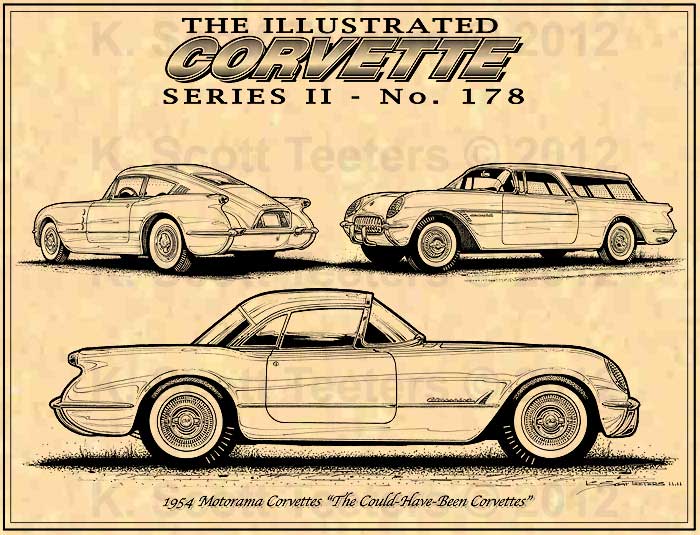 The above 11×17 Parchment Paper Print is available for just $24.95 + $6.95 S&H. Each print is signed and numbered by the artist. You can order your with the secure PayPal button below, or by calling 1-800-858-6670, Monday through Saturday 10AM to 9PM Eastern Standard Time.
The above 11×17 Parchment Paper Print is available for just $24.95 + $6.95 S&H. Each print is signed and numbered by the artist. You can order your with the secure PayPal button below, or by calling 1-800-858-6670, Monday through Saturday 10AM to 9PM Eastern Standard Time.
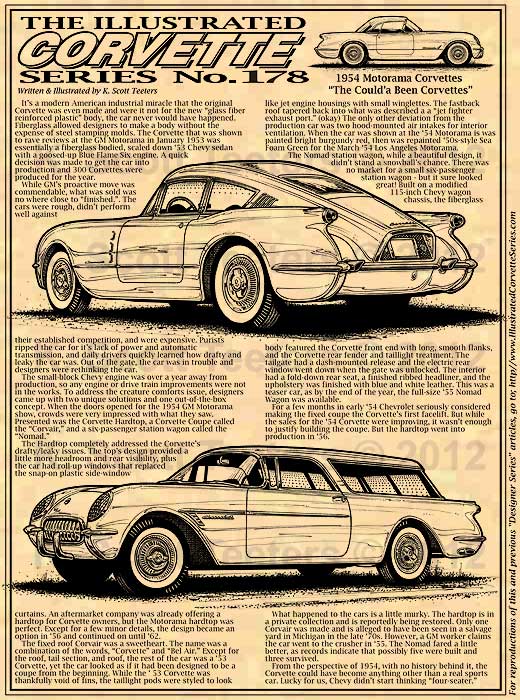 The above 11×17 Parchment Paper Print is available for just $24.95 + $6.95 S&H. Each print is signed and numbered by the artist. You can order your with the secure PayPal button below, or by calling 1-800-858-6670, Monday through Saturday 10AM to 9PM Eastern Standard Time.
The above 11×17 Parchment Paper Print is available for just $24.95 + $6.95 S&H. Each print is signed and numbered by the artist. You can order your with the secure PayPal button below, or by calling 1-800-858-6670, Monday through Saturday 10AM to 9PM Eastern Standard Time.
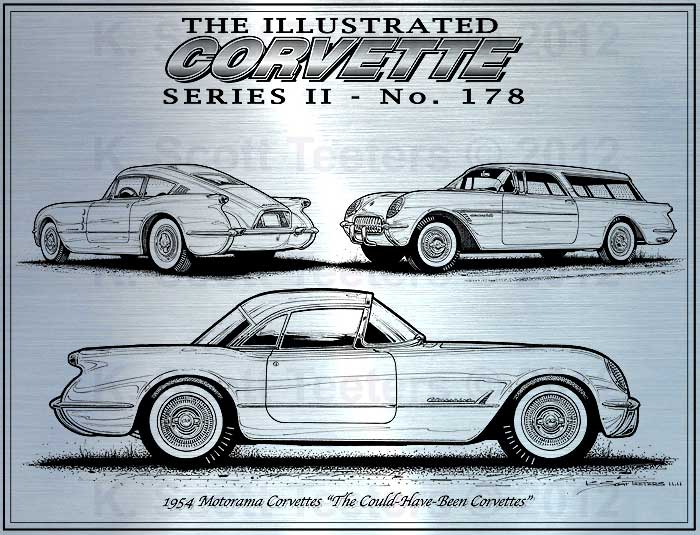 The above 11×17 Laser-Etched Print is available for just $49.95 + $8.00 S&H. You can order your with the secure PayPal button below, or by calling 1-800-858-6670, Monday through Saturday 10AM to 9PM Eastern Standard Time.
The above 11×17 Laser-Etched Print is available for just $49.95 + $8.00 S&H. You can order your with the secure PayPal button below, or by calling 1-800-858-6670, Monday through Saturday 10AM to 9PM Eastern Standard Time.
Here’s the BEST way to keep up with K. Scott Teeters’ Corvette blog!


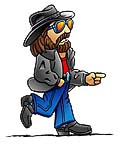
I think documentation may exist that as many as five Corvairs were built but as of right now I have not seen it. I feel confident that the red car shown at the Waldorf Astoria in New York and the green car shown a later Motoramas were different cars, not the same car repainted,
I have studied the Nomad for over three decades and I can document that there were at least two and there is anecdotal evidence of a possible third. I have never seen any records that prove the number of Nomads that were built. Can you tell me where such documentation exists?
Hi David,
Thanks for your comments. I’m amazed that we have the documentation that we have. After all, we’re talking about a handful of hand-made show cars based on a car that’s no longer made, from over 50 years ago. Then add on to that the fact that the Corvair was just one of around 6 models from one of six GM divisions… We’re lucky there’s anything left! LOL!
It would be interesting and fun to know just how many show cars and concept cars GM has made over the years – probably over 1,000. And it gets complicated because like the original Shelby Cobra, many show cars were repainted for various reasons, then shown in different places, photographed, and then possibly being mistaken for one of several cars, when possibly there was never more than one of two. In a sense, it’s kind of a mess, but it sure adds to the mystery.
When I worked in the R&D Department at Tyco Toys and Mattel Mt. Laurel, we were regularly throwing out concept drawings and models of dead projects. It always made me wonder how many pieces of art, models, prototypes, etc at the car companies were thrown away! What would that stuff be worth today??? Yea, things that make you go, “Hmmmmm…..” – Scott